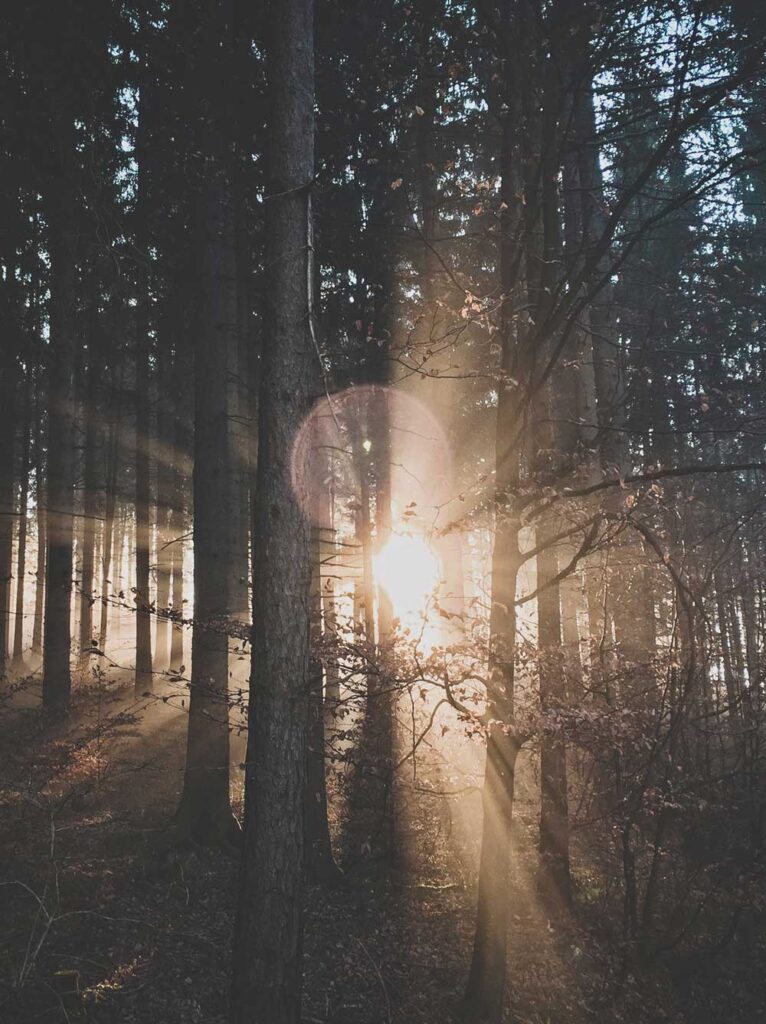What are the different types of composition in photography?
In photography, the composition is vital in creating captivating and visually appealing images. The arrangement of various elements within the frame determines how the viewer perceives and interacts with the photograph. This article will explore the different composition techniques photographers use to create stunning visuals that can truly stand out.
1. Rule of Thirds

The rule of thirds is one of photography’s most well-known and widely used composition techniques. It involves dividing the frame into a grid of nine equal parts by placing two equally spaced horizontal lines and two equally spaced vertical lines. The key elements of the image are then positioned along these lines or at their intersections, creating a visually balanced and exciting composition.
2. Leading Lines
Leading lines are an effective way to guide the viewer’s eye through the photograph. The lines or shapes within the frame lead the viewer’s gaze toward the main subject or focal point. These lines can be found in various forms, such as roads, paths, or natural elements like rivers or tree branches. By strategically incorporating leading lines into your composition, you can add depth and create a sense of movement within the image.
3. Symmetry and Balance
Symmetry and balance in photography can create a visually pleasing and harmonious composition. Symmetrical compositions are achieved when the elements within the frame are perfectly balanced on either side of an imaginary central axis. This can be particularly effective in architectural photography or when capturing reflections. On the other hand, asymmetrical balance can be achieved by placing unequal elements in a way that creates a visual equilibrium.
4. Framing
Framing involves using elements within the scene to frame the main subject. This technique adds depth and layers to the photograph while drawing attention to the subject. It could be achieved using doorways, windows, arches, or natural elements like tree branches or leaves. By incorporating framing into your composition, you can create a sense of context and focus the viewer’s attention on the subject.

5. Depth of Field
Depth of field refers to the area in the photograph that appears sharp and in focus. By controlling the depth of field, photographers can direct the viewer’s attention to a specific location within the frame. Shallow depth of field, achieved with a wide aperture, can create a beautiful bokeh effect, where the background is blurred, emphasizing the subject. On the other hand, a deep depth of field, achieved with a narrow aperture, ensures that both the subject and the background are in sharp focus.
6. Negative Space
Negative space is the area surrounding a photograph’s main subject or focal point. It provides breathing room and helps to highlight the issue by minimizing distractions. Using negative space can create a sense of simplicity and elegance in the composition. It allows the viewer’s eyes to focus solely on the subject, making it more impactful and memorable.
7. Perspective and Point of View
The choice of perspective and point of view can significantly influence the composition of a photograph. You can create a unique and exciting composition by changing your vantage point or angle. Shooting from a low angle can make the subject appear larger and more dominant while shooting from a high angle can provide a different viewpoint and offer a fresh perspective. Experimenting with different angles and perspectives can result in visually engaging compositions.
8. Color and Contrast
Color and contrast play a significant role in the composition. The use of complementary or contrasting colors can create a visually striking image. Additionally, juxtaposing light and dark areas within the frame can add depth and visual interest. Paying attention to color theory and understanding how colors interact with each other can help you create compositions that evoke specific emotions and leave a lasting impact on the viewer.
9. Golden Ratio
The golden ratio is a mathematical concept used for centuries to create aesthetically pleasing compositions. It is a ratio of approximately 1:1.618, which is visually appealing. The golden ratio can be found in nature, architecture, and art. By incorporating this ratio into your compositions, you can create a sense of harmony and balance pleasing to the eye.
In conclusion, mastering different composition techniques can significantly enhance your photography skills and help you create captivating images. Experimenting with various techniques and combining them creatively can result in unique and visually compelling compositions. Remember to practice and develop your style while considering the fundamental principles of composition. Happy shooting!
Conclusion:
In photography, composition is a crucial element that can make or break the impact of an image. By understanding and implementing various composition techniques, photographers can create visually stunning and captivating photographs that stand out. Whether the rule of thirds, leading lines, symmetry, framing, or any other technique, each approach brings a unique flavor to the composition.
Photography is an art form that allows individuals to express their creativity and vision. While there are guidelines and techniques to follow, it’s important to remember that rules can also be broken to achieve artistic and innovative compositions. Feel free to experiment, explore new angles, and push the boundaries of traditional composition.
By honing your skills in composition and continually practicing, you can develop your style and create compositions that genuinely reflect your artistic vision. Remember to consider leading lines, balance, negative space, depth of field, and perspective. Use color, contrast, and framing to add visual interest and create powerful storytelling within your photographs.
Remember that composition is just one aspect of photography, and it works in harmony with other technical and creative factors such as lighting, exposure, subject matter, and post-processing. Continuously learning and evolving as a photographer will help you refine your composition skills and produce compelling images that resonate with your audience.
(FAQs)
Q1: How important is composition in photography?
A1: Composition is vital in photography as it determines how the elements within an image are arranged, creating visual harmony, balance, and interest. A well-composed photograph can captivate viewers, evoke emotions, and effectively convey the photographer’s intended message.
Q2: Are there any rules in composition that must be followed?
A2: While there are guidelines and techniques in composition, they are not strict rules. They serve as a foundation to create visually pleasing images, but creativity and personal style play an important role. Understanding the principles and then exploring and experimenting with developing your unique compositions is essential.
Q3: Which composition technique should I use?
A3: The choice of composition technique depends on the subject, the story you want to tell, and your artistic vision. Each method has its strengths and can convey different moods or emotions. Experiment with other techniques and find the ones that resonate with your style and enhance the message you want to get.
Q4: How can I improve my composition skills?
A4: Improving composition skills requires practice, experimentation, and observation. Study the works of renowned photographers, analyze their compositions, and understand why they are visually compelling—approach by taking photographs regularly, actively seeking out interesting subjects and scenes, and exploring different techniques.
Q5: Can composition be learned or purely based on creativity?
A5: Composition can be known and improved upon through knowledge, practice, and experience. While creativity plays a significant role, understanding the principles of composition and how different techniques work can help photographers develop their skills and create more impactful and visually pleasing images.
Remember, the key to mastering composition is continuous learning, practicing, and embracing your artistic vision. With dedication and a keen eye for detail, you can create photographs that leave a lasting impression on your audience.
Author Profile

Latest entries
- August 19, 2024Photo PrintsHow to Clean Glass Pictures: Keep Your Memories Sparkling
- August 19, 2024Photo PrintsThe Best Photo Cameras of 2024
- August 19, 2024Photo PrintsAPG Graphics: The Only Company That Laminates Photos on Glass in the USA
- August 19, 2024Photo PrintsThe Best Online Photo Printing Services for 2024

